How to water sustainably

Plants need the most water in hot, dry, and windy weather and newly planted plants are especially at risk of water shortages because their roots haven’t yet reached the deeper, moister soil layers. Sustainable gardening depends on smart water management with winters expected to be warmer and wetter, while summers grow hotter and drier.
Mains watering should be used as sparingly as possible and understanding how to conserve water and store excess winter rainfall for dry summer months combined with efficient watering techniques can make a big difference. Using collected rainwater doesn’t produce carbon emissions, plants prefer it, and it’s free!
RHS Top tips
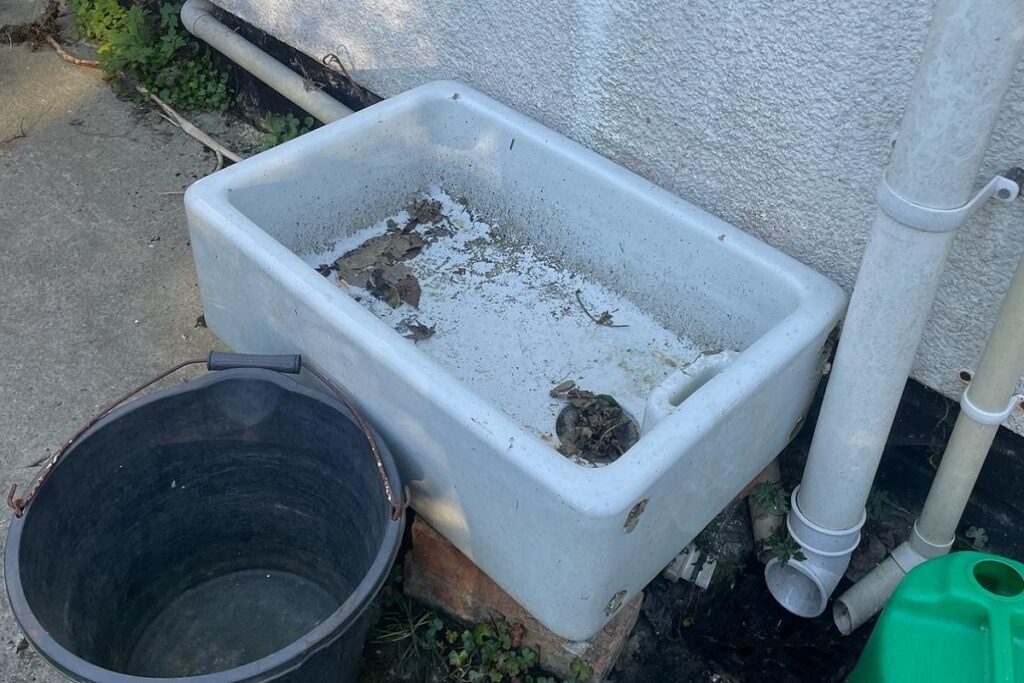
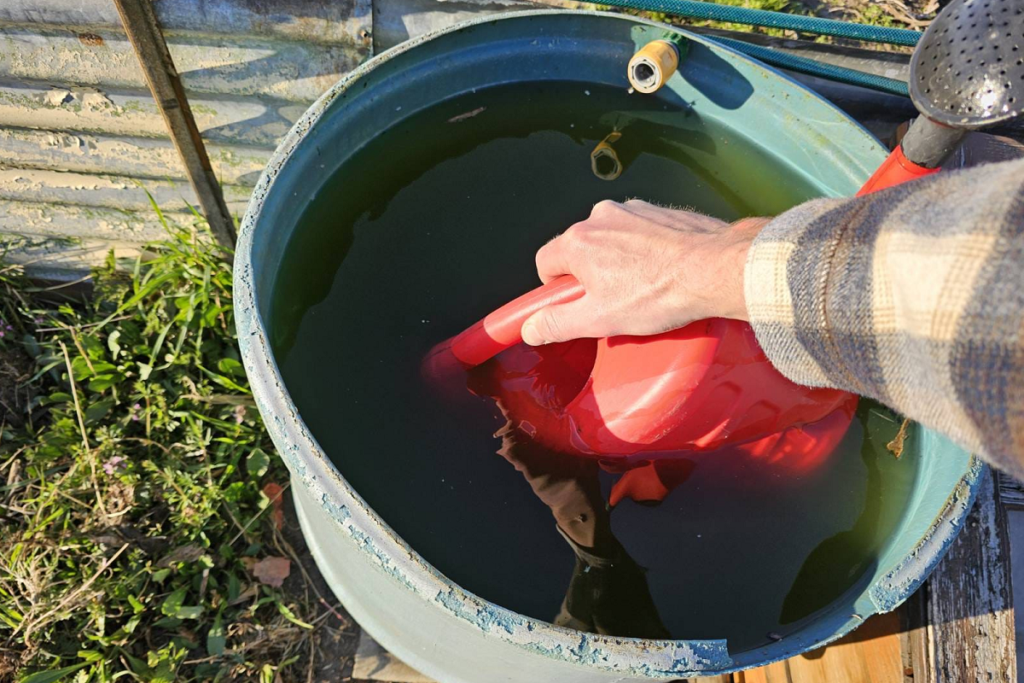
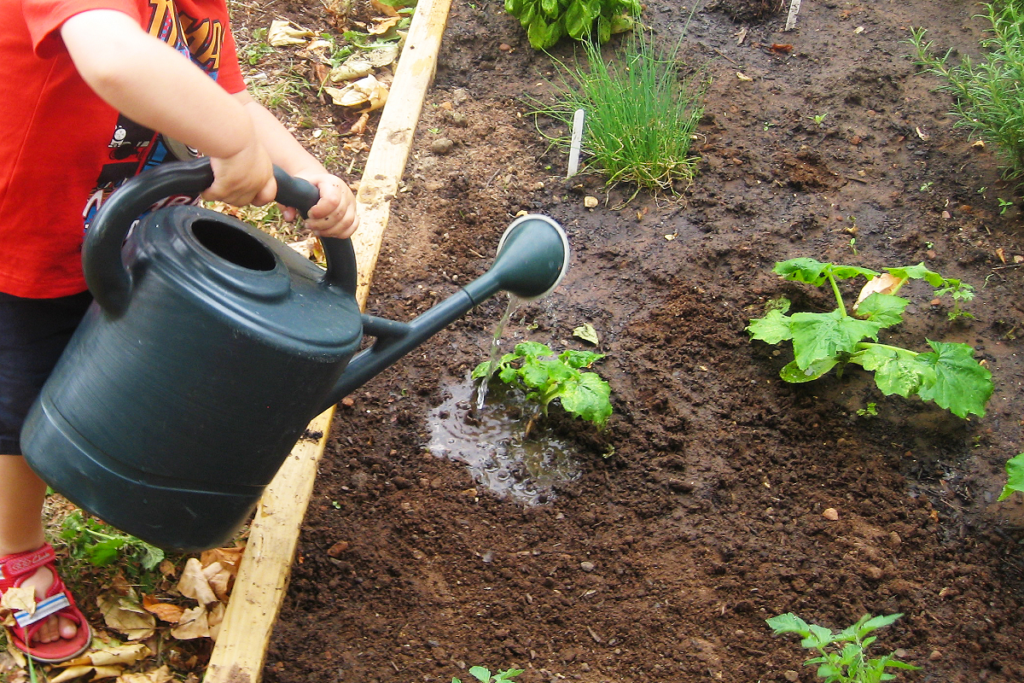
- Install a water butt. If you don’t have one, you can still use watering cans and old bins to collect rainwater.
- Switch to watering in the morning – domestic water use tends to peak in the early evening, so start watering early in the morning to ease the demand later in the day. This will also help provide the water that plants will draw on through the day, and will avoid it just draining away at night.
- Don’t water your lawn – lawns are tough and you may be surprised at how quickly they bounce back after rainfall.
- Swap hoses for a watering can – an hour’s use is equivalent to the average supply for a family of four for two days under normal circumstances. Using a can slows the flow when watering containers, meaning more water stays in the pot rather than running out the bottom.
- Train your plants to drink more slowly by giving them less – using less water will actually encourage the plants to drink less. In essence, if you keep the glass half full, your plants will adapt and learn to drink more slowly.
- Organic matter. Make sure your soil has plenty of organic matter dug into it as this will help hold the water. (See our soil guide for more info on organic matter).
Collecting rain water
You can collect rainwater from the roofs of houses, garages, greenhouses, and other garden structures, provided they have gutters and a downpipe leading to a drain at ground level. Preventing unpleasant smells and the spread of diseases can be done by cleaning the water butts annually and lids can help keep debris and wildlife out, prevent algae, and discourage mosquitoes.
Most water falls in winter and can be stored for summer use. During a dry spell, the water shortage is first covered by soil reserves, then by deeper groundwater, as the soil can pull water up like a wick. If you don’t have room for a water butt, you can still increase the water holding capacity of your soil by adding organic matter.
It’s easier to access the water if the butt has a tap at the bottom and sits on a stand, so the watering can can rest on the ground under the tap. Stands can be bought or made with bricks, but make sure the base is stable and level to prevent it from tipping over.
Re-using grey water
Non-edible plants can be watered with ‘grey water’- water from showers, baths, kitchens, and even washing machines (from rinse cycles) but using this on edible plants needs to be done properly and with caution to remove any risk of contamination from pathogens in the water. The RHS have more information on watering with grey water that also includes guidance on minimising the health risks from stored water.
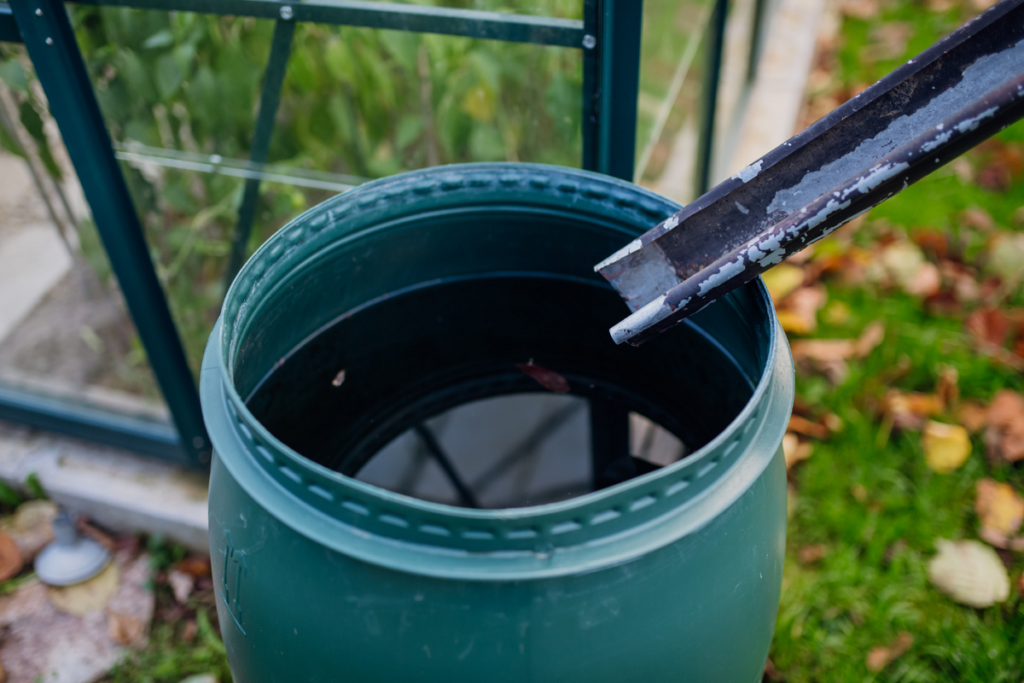
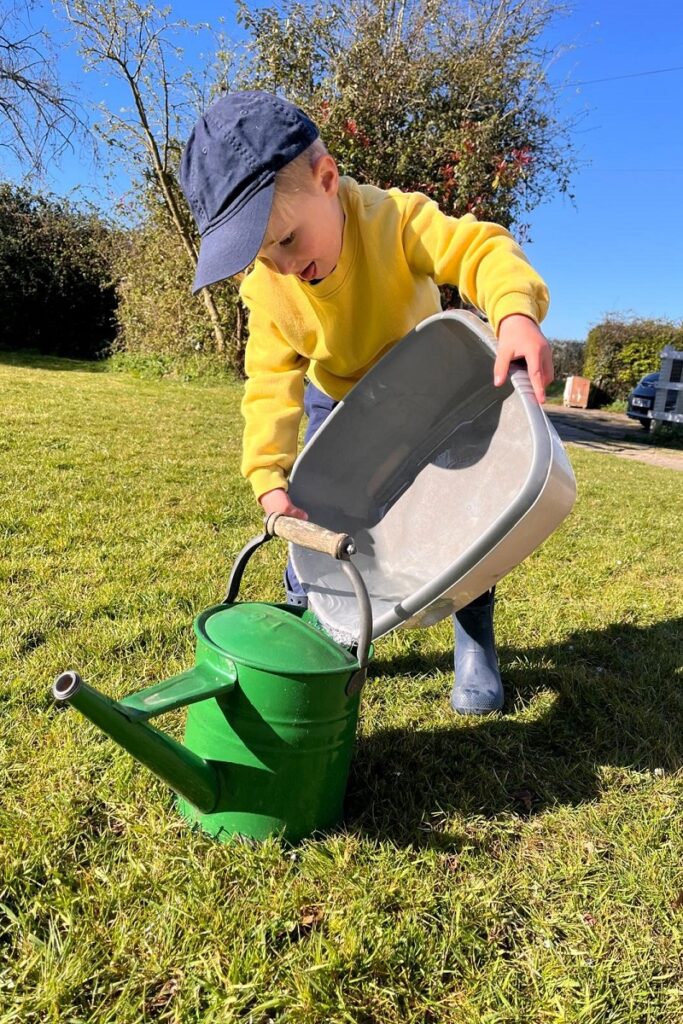
The RHS is running a Mains2Rains campaign that aims to get more people to ‘water the way nature intended’ and below is a helpful top tips guide as well as a QR code that will take you to a pledge page where you can show your support by pledging your actions.

